Replacing fossil-fuelled furnaces with renewable electrical heating and cutting carbon from some heavy industries could make a serious dent in climate targets
The energy-intensive nature of upstream chemical manufacture, from cracking to petrochemical production, gives it a huge carbon footprint. Other common large-scale processes, such as steam reforming methane to make hydrogen, create carbon dioxide as a by-product, in addition to the emissions from the energy. While multiple efforts are afoot to commercialise carbon capture and storage techniques to prevent CO2 from escaping into the atmosphere, this is, effectively, burying the problem. It would be better to stop generating CO2 in the first place, or use it to create useful raw materials.
Steelmaking produces a huge amount of CO2 as a by-product of reducing iron oxide ore, representing 7% of global CO2 emissions. A tonne of steel made in a traditional blast furnace using carbon to reduce the ore generates 1.6 tonnes of CO2. A new process that uses hydrogen as the reductant instead is being developed by Sweden’s Hybrit initiative, a collaboration between steelmaker SSAB, iron ore specialist LKAB and electricity producer Vattenfall, with backing from the Swedish government. It would produce water vapour instead of CO2 as the by-product. With blast furnaces having been used for centuries, it represents a huge technology shift.
A tonne of steel made in a traditional blast furnace using carbon to reduce the ore generates 1.6 tonnes of CO2. Using hydrogen made by electrolysis with clean electricity it would be close to zero
A 1 tonne/hr pilot plant is on schedule to start operation in June 2020. The pilot phase is set to run to 2024, followed by a demonstration phase making thousands of tonnes/yr. ‘After that, we think we will be ready for commercial production,’ says Mikael Nordlander, head of R&D for industry decarbonisation at Vattenfall. The target is to be up and running in 2035.
Rather than creating the hydrogen via reforming methane, the plan is to make it from water by electrolysis. Although gas-sourced hydrogen would still cut the steel’s carbon footprint to about 0.6 tonnes of CO2 per tonne of steel, with electrolysis using clean electricity it would be close to zero. Sweden’s electricity system is already 98% fossil-free.
Nordlander says that current estimates price the steel at a 20–30% premium, but increases in CO2 emissions costs via the EU trading system mean this may well be pessimistic. There is likely to be demand for greener steel, even if it costs a little more, he adds. ‘It might add €100 to the price of a car, which is marginal at the customer end of the value chain,’ he says.
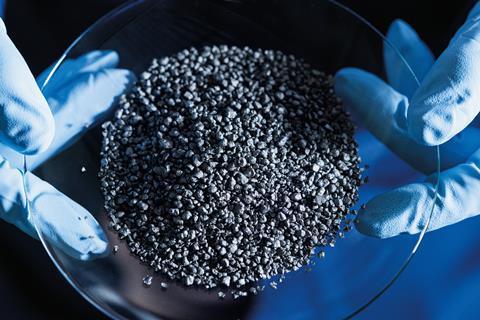
Steam reforming of natural gas makes hydrogen and carbon monoxide, which can be further reacted with steam to produce more hydrogen, plus CO2. BASF is working on an alternative process that decomposes methane into hydrogen and solid carbon instead.
‘The process is a pyrolysis at high temperature, above 800°C,’ says Andreas Bode, the company’s programme leader for carbon management R&D. ‘The reaction evolves via activation of the methane molecule and proceeds via radical formation to higher aromatics and solid carbon.’
The idea is not new – earliest attempts to commercialise it date back to the 1950s. But there has been little success, Bode says, because of reactor challenges such as construction materials and the formation of solid carbon. It makes about 3kg of carbon per kilo of hydrogen; this might be re-used in steel or aluminium production, he says.
Electrolysis has a higher energy demand per mole of hydrogen, Bode adds, while steam reforming of methane with carbon capture and storage does not fully avoid CO2 emissions. ‘Methane pyrolysis could become a realistic option as soon as the main reactor technology hurdles are overcome,’ he says. The company hopes to have a large lab-scale reactor up and running in the next few years, although commercialisation would likely take a further decade.
A load of hot air
Many upstream chemical processes, including cracking and distillation, rely heavily on steam. Yet once it has served its purpose, the residual heat is not hot enough to be useful, and has to be disposed of via cooling systems. This wastes vast amounts of energy.
Belgian start-up Qpinch aims to recycle that heat, using it to part-power generation of more steam in a way that leads to lower CO2 emissions. The process, with which the firm won the Royal Society of Chemistry’s emerging technologies competition in 2015, mimics the adenosine triphosphate-based energy cycle found in living cells, but on an industrial scale. It allows half the energy in the waste heat to be recovered as process heat at a much higher temperature.
‘The main differentiators with existing solutions are that we provide important temperature increases as well as the high output temperatures required in many of these processes, and that we are megawatt-scale,’ says Qpinch co-founder Christian Heeren. ‘This is a prerequisite to be relevant for industrial applications. There is almost no operational cost to run our units, so all the savings go straight to the bottom line.’
Base chemicals manufacturer Borealis signed up to build a scale-up project in October 2018, and a 1.5MW installation is now being constructed at its low-density polyethylene plant in Antwerp. Operation is slated for start-up early next year, and 3000 tonne/year CO2 savings are projected. Qpinch has signed deals with two further, as yet un-named, petrochemical and refinery companies.
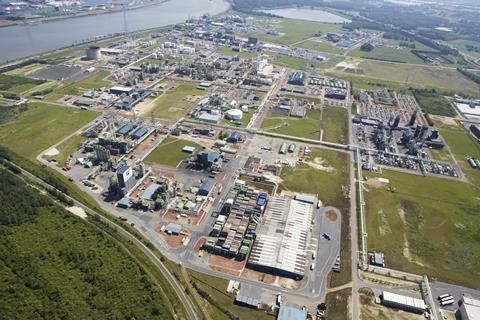
‘After the launch, Borealis will assess the potential for further roll-out across its entire network,’ Heeren says. ‘The units we are now designing for other clients are between three and seven megawatts. Once we reach that milestone, we can recover waste heat in the range of dozens of megawatts per unit, and save hundreds of megawatts of heat production in those large plants.’
Importantly, he adds, while the technology is new, it can be implemented using equipment already proven in the chemical industry. There is waste heat in any process that employs steam, and he believes the technology would be applicable in other sectors, with interest coming from the food and paper sectors. At the moment, the installations are retrofits, but ultimately Heeren hopes the heat recovery technology will be included at the outset when new plants are being designed and constructed.
Cracking with electricity
In a cracker, steam is part of the chemistry rather than just a heat source, so recycling is less feasible. The heat comes from gas-fired furnaces, but BASF is working on a cracker heated using electricity instead. It’s not as simple as it sounds, Bode explains, not least because of the challenge of finding metallic materials that can withstand high electric currents and are suitable for a high-temperature reactor.
‘The constant availability and low cost of renewable electricity are prerequisites to realise such technology,’ Bode says. ‘If the energy could come from renewable electricity instead of natural gas, CO2 emissions could be reduced by as much as 90%, since the emissions stem from heating the reactors.’
The company expects it will take five years to develop the concept, and hopes the first pilot-scale cracker will be onstream before 2025; it would be several more years before an industrial-scale cracker could be commissioned. Ultimately, it could replace both naphtha crackers and the ethane crackers used to process feedstock from shale gas, and may have wider applications. ‘We are basically developing a new furnace concept that could also be used for heating other high-temperature processes such as reformers,’ Bode says.
Use it, don’t lose it
A lot of effort is being put into the idea of using CO2 as a raw material, including a project to make methanol announced recently by Sweden’s Perstorp, and Covestro’s Cardyon polyols, which are already commercially available. But waste gases from industrial production often contain CO alongside the CO2, plus other components such as sulfur-containing gases. Separating out the CO2 takes a lot of energy, which creates further waste CO2. What about using the raw, mixed waste gas instead?
The Carbon4PUR project, led by Covestro and with EU funding, is looking to convert mixed CO/CO2 waste streams into useful chemicals – polyols for the polyurethane industry. The 14-member, seven-country consortium of industrial, university and consultant partners, includes two polyurethane-using companies, Belgian foam producer Recticel and Greek coatings specialist Megara Resins. The gas waste stream comes from Arcelor Mittal’s steel manufacturing facility, co-located with the project in Marseilles, France, where Covestro also has a facility.
Waste gases from industrial production often contain CO alongside the CO2. We are not only working with the CO2 but also the CO, to make polyol intermediates for poyurethane production
First, the sulfur compounds must be removed in a catalytic process, which is being investigated by scientists at the University of Ghent in Belgium. The cleaned-up gas mixture is converted into intermediates by Covestro, and these further converted into the polyols that are a raw material for polyurethane. According to Covestro project manager Liv Adler, the first kilograms have already been made, and are being tested for performance in rigid foam insulation boards and coatings.
‘The polyols are now with Recticel and Megara, who are evaluating whether they meet their needs, and that the foams and coatings [they produce] are comparable to their usual products,’ Adler says. ‘With their feedback, we will continue to develop the polyols.’
Multiple different intermediates might be made from the gases in the waste stream. ‘We are not only working with the CO2 but also the CO, to figure out which of the possible intermediates are the most promising,’ Adler says. ‘The polyols perform quite differently depending on the intermediates used to make them.’ Ultimately, the idea would be to directly connect the gas-generating site to the facility where it is converted to useful chemicals.
Getting the pressure for the conversion process right is also important. ‘How much pressure can we use and still be economically feasible?’ she says. ‘More pressure gives better conversion of the gases, but also requires stronger vessels and pipelines, which is very cost-intensive. We have to find the optimum between chemistry and economics, and the products should be no more expensive than established polyols.’
Catalytic dry reforming of methane, a chemical pathway to olefins from natural gas and CO2 instead of naphtha, is another process that might put waste CO2 to good use, and BASF is one company exploring its potential. The first step is to generate carbon monoxide-rich syngas, which is used to produce dimethyl ether (DME). This is then used to make olefins. ‘For syngas generation, two novel spinel-type materials based on nickel and cobalt have been developed and optimised, based on high-throughput screening,’ Bode says. ‘For the DME synthesis, BASF has developed new bifunctional catalysts.’
BASF has been developing the process with Linde, which has already built a pilot unit, and optimised DME production on a mini-plant scale. In June, the two companies signed a deal with China’s Sichuan Lutianhua to co-develop a DME pilot plant.
Bode foresees that a reduction of 50–70% in CO2 emissions might be achievable in dimethyl ether production, and it could be possible to make syngas with near-zero, or even negative, emissions. ‘If the reformer were heated with electricity from renewable resources, a net consumption of CO2 could be reached,’ he claims. ‘Further technological developments like electrical heating and availability of renewable energy [will be required] to enable continuous production at competitive cost.’






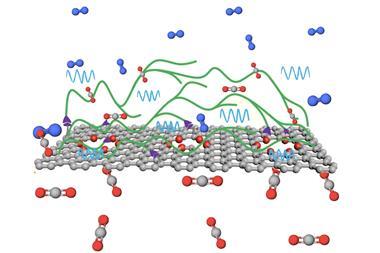

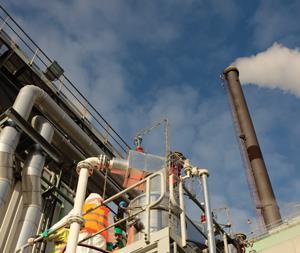



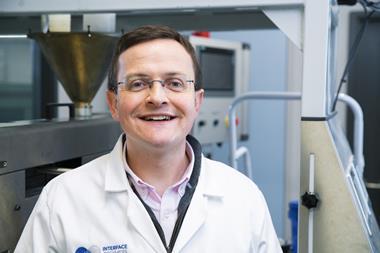



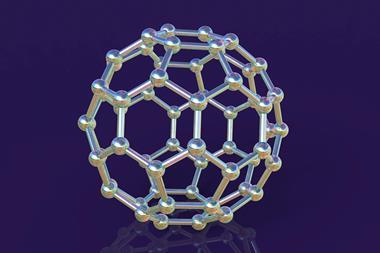
No comments yet